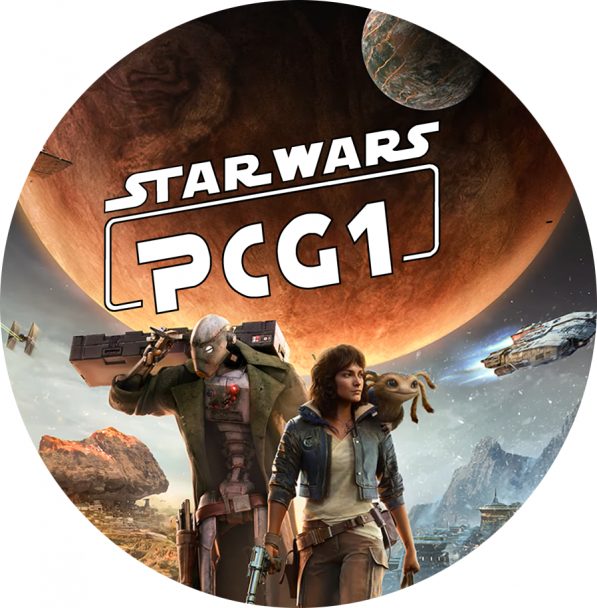I’ve never designed a 3D world for a video game, but I can imagine that it is frustrating. A company like Tomb Raider developer Eidos Montreal employs an army of artists and designers to build a realistic and immersive environment, but then it also has to make that space fun and easy to navigate for millions of players. That’s when studios begin to rely on tricks. In the reboot of God of War, Sony Santa Monica gave players a companion to act as a guide. In the recent Tomb Raider games, Eidos elected to go with a trail of white paint that always points players to the proper path.
If an explicit trail of white paint sounds like a cheap trick to you, though, you’re not alone. Following the release of Rise of the Tomb Raider, a fan movement called “GROWL” (Get Rid of White Ledges or, possibly, Group for the Removal of White Ledges) sprung up in response. The problem is that while people hate getting lost and disorientated in games, they also don’t want designers to rely on such an obvious bread-crumb trail as a shortcut.
And you want to know who also agrees with that criticism? The team making Shadow of the Tomb Raider, which is the latest entry in the long-running franchise that launches September 14 for PC and consoles.
I spoke with Shadow of the Tomb Raider director Daniel Bisson and senior producer Mario Chabtini at the PAX West event last weekend, and they revealed that they understand the problem with the white paint better than anyone.
“When you’re building a world, you don’t think about white paint at the beginning,” Bisson told me. “The white paint always comes after. It’s when people are lost that we have to paint that in. In this case, we have this awesome world of discovery where Lara finds her first living tomb. That’s a great feeling — but then you get lost, and we add in the white paint and suddenly you lose that initial vision, that initial beauty of being there because now you know you’re in a video game again and you’re just following that paint.”
So Bisson and his team listened to the community and decided not to use the white paint on the normal difficulty setting (and higher) in Shadow. But the studio still had the same problem of players getting lost and frustrated, and without the white paint, Eidos would have to get creative.
“The worst thing is if the player drops the controller,” said Chabtini. “We want to avoid that.”
Bisson echoes this.
“Taking out the white paint was an obvious choice,” the director said. “But then people stop playing. They say, ‘I’m stuck here. I don’t want to continue.’”
Gamers have seen plenty of 3D worlds that are expansive, open, and easy to get around in. The aforementioned God of War has the Atreus (the main character’s son) tell you if you’re going in the wrong direction. If you go to look at some side content, Atreus will wait for you back on the main path. Naughty Dog’s Uncharted games use companions in similar ways as well.
Other games try their own version of the white paint, but many of them get away with it by integrating it with the environment or story. Monster Hunter: World has the scout flies that guide you like a giant living arrow. The Dead Space games from developer Visceral have a personal GPS device that shines a light on the ground to tell you where to go next.
But Eidos doesn’t want to use the white paint or anything too similar, so how does Shadow of the Tomb Raider nudge players in the right direction and lure them onto the correct path? One of the answers is right in the name of the game.
“We can use the light,” said Chabtini. “The lighting is very important in Shadow of the Tomb Raider. We use it to make sure that we handcraft those areas where we want the player to look.”
Light and shadow do a lot of the work that white paint did in Rise of the Tomb Raider, but it does it in a way that doesn’t feel cheap and distracting. Where in Rise I would notice a white ledge and consciously realize that is where the game wants me to go, in Shadow the light is luring you and the shadows are repelling you on a more subconscious level.
But Eidos is doing way more than creating a tunnel of light for you to follow. In my hands-on time, I noticed that the camera will come out of cutscenes with a strong sense of direction. The game also often draws your eye to the horizon by creating gaps in the foliage of the jungle.
In towns with people, Eidos even uses some psychological tricks to discourage you from wanting to go down certain alleys. On one road, you may find a dense crowd of people where the other route is relatively empty. In a more tense moment, a table full of fragile china blocks a pathway. You can’t climb over that table, but you also wouldn’t want to because it looks like you would break everything and draw attention to yourself.
Finally, the game uses giant landmarks like giant pyramids to pull players along. The path to the pyramid is rarely a straight line, but Eidos has seemingly set it up so that if you try to move toward that landmark, you’ll end up finding the next detour or challenge on your way to getting to that destination.
Of course, these are all still very “video gamey” solutions to moving players in the right direction, but the GROWL crowd only ever hated the white paint because it brought so much attention to itself. The tricks in Shadow, on the other hand, avoid that problem using variety and subtly.
“It needs to feel real, as much as possible,” said Bisson. “Even with the landmarks. You can have a pyramid in the jungle — great, I know where to go now. But you can’t place a pyramid in every single beat, you know? It makes no sense! You have to find other things, more creative ideas, that are part of the world, but also help you navigate through the world.”
And while the final game isn’t out yet, I’m confident that Eidos Montreal succeeded at maintaining that authenticity. I think that because Chabtini and Bisson noted that the game still does have a few instances of white paint even if it doesn’t qualify as a full trail. But when I came across the first instance of this, it didn’t come across as part of a shortcut for designers. Instead, it felt like a natural part of the world.

